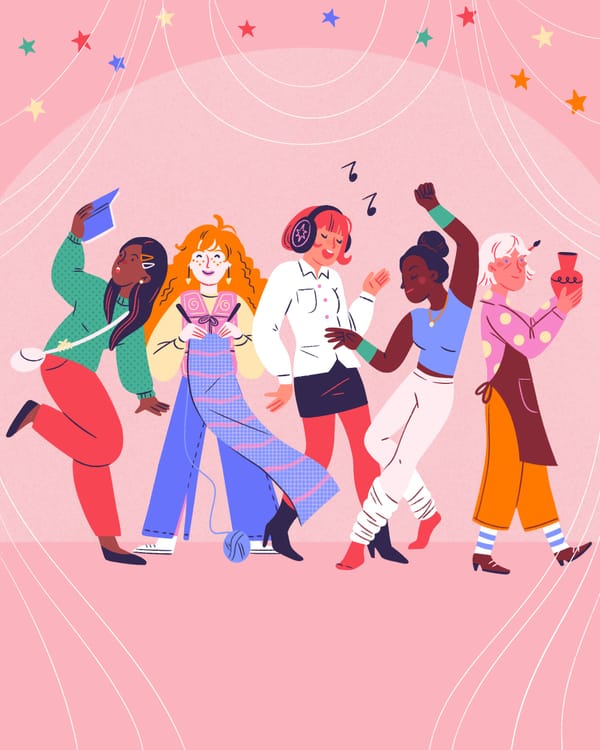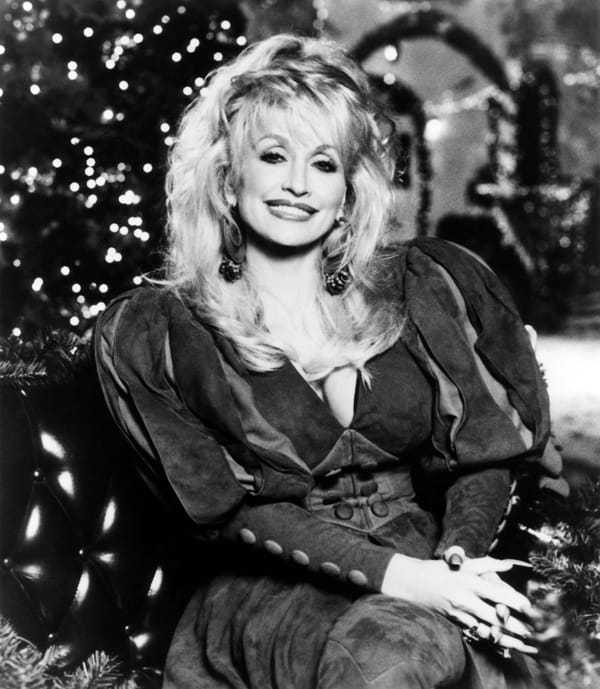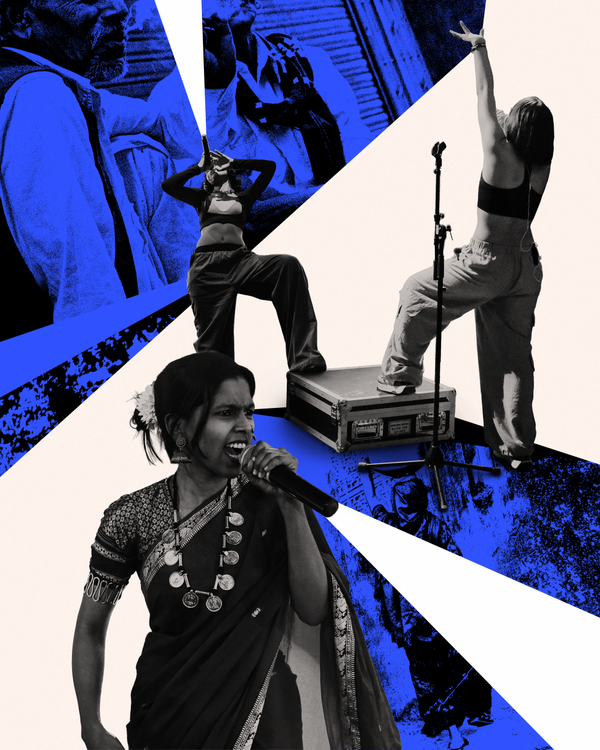Why RBG’s Complicated Legacy Doesn’t Bother Me
Nothing will take away from the immense wins Ruth Bader Ginsburg secured for those who couldn’t stage their own fights. But she was complicated, and so is her legacy.
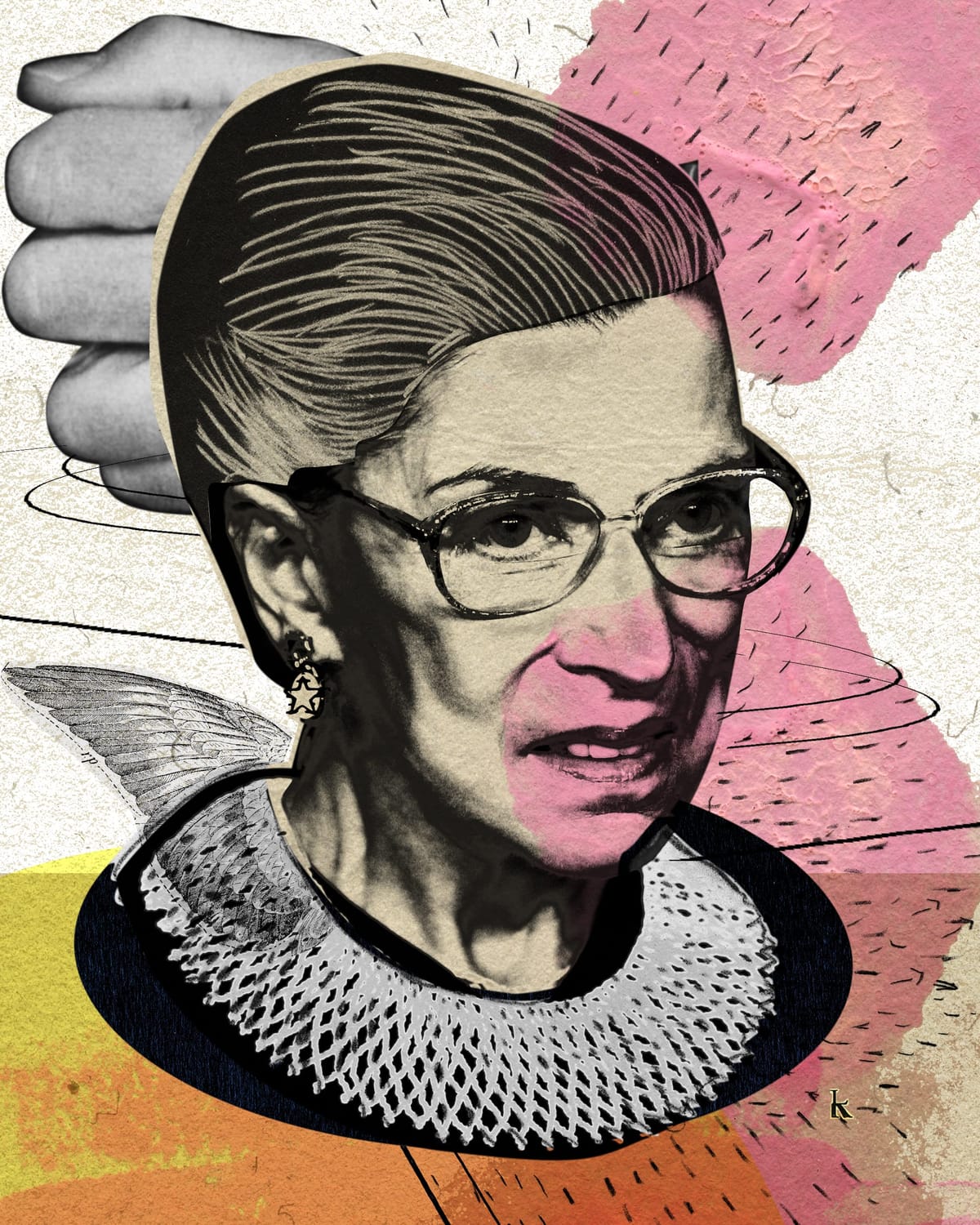
Five years ago today, I was sitting—socially distanced and masked up—outside a ramen shop on Manhattan’s Lower East Side when my phone lit up with a push notification.
Ruth Bader Ginsburg—the Supreme Court justice, a stalwart champion of women’s rights, a pioneering force in the legal world, a bridger of ideological divides, an opera devotee, a fitness nut, and a cultural icon whose brilliance would lend itself to Millennial meme-making—had died. She was 87. My eyes stung with tears as I sipped my soup.
At the time, I was in the midst of writing a book proposal for what would become a narrative history of women’s economic empowerment in the U.S. (It’s called, “Women Money Power,” by the way. Read it!—FD, editor)
In the early stages of research, I was learning that many roads in the great arc of women’s economic empowerment lead straight to RBG. Some examples: She helped secure women’s equal right to sign a mortgage without a male co-signer. She argued successfully for the inclusion of women in employer-based retirement and health plans. And, as a Supreme Court justice, she consistently voted to uphold protections against workplace discrimination on the basis of sex.
Before long, I had shifted from being a casual RBG admirer to someone determined to know every detail of her remarkable life. Her death was not unexpected, but it felt like a blow to civil rights—like a loss to America—just as I was fully beginning to appreciate the extent of all she’d done for American women. And that felt tragic.
In the years since, the world has shifted. The U.S.’s ideological divides—the very ones that RBG both embraced as inevitable and seemingly navigated so deftly—have become ever more entrenched, consequential and poisonous.
The legal precedents she helped put in place have been challenged. The democratic values she so staunchly defended are under threat. Many of us are grappling with the question of how we got here. For an RBG devotee like me, that means admitting certain things, too. That her record on issues of criminal justice and race aren’t what I’d want them to be, for example. Of course, nothing will take away from the immense wins she secured for those who didn’t have the means to stage their own fights, but she was complicated and so is her legacy.
‘A bit much’
Ruth Bader was born in Brooklyn in 1933 to Nathan and Celia Bader. Her father had come to the U.S. as an immigrant. Her mother was a dyed-in-the-wool New Yorker.
Her parents instilled in her a love of learning, and after graduating from James Madison High School in Brooklyn, Ruth headed north to Cornell University, graduating in 1954. She earned distinction in every subject. That same year, she married Martin Ginsburg, a fellow student, one year her senior.
From there Ruth set her sights on the law. Harvard—where her husband was already a student—admitted her as one of just nine women in a class of 500. The discrimination was brutal and constant. Both faculty and students regularly demanded she justify her right to occupy a man’s place at the elite school. Women were still barred from some sections of the library.
Still, she persevered. Ruth made the Law Review at Harvard, and later at Columbia, to which she transferred in 1958 to finish her degree. (Her husband had landed an elite position in New York City, so she followed him there.) She ended up graduating at the very top of her class in 1959. But all that academic accomplishment still wasn’t powerful enough to counteract the stubborn norms and stereotypes that permeated the broader working world at the time. Despite her stellar grades and excellent references, not a single law firm would hire her.
“In the Fifties, the traditional law firms were just beginning to turn around on hiring Jews,” she later wrote in an essay, titled ‘My Own Words.’ “But to be a woman, a Jew, and a mother to boot, that combination was a bit much.”

Holding on too long?
Eventually, Judge Edmund Palmieri, of the U.S. District Court for the Southern District of New York, hired Ruth as a law clerk. It was a foot in the door for her, and, as it turned out, the opportunity she needed to build a career that blended her two passions—scholarship and activism.
After clerking, she started teaching at both Rutgers and Columbia. She was instrumental in starting the ACLU’s Women’s Rights Project which would lay the groundwork for many landmark gender-equality cases that would change American law and American life. In 1972, she became the first woman to receive tenure at Columbia Law School.
By 1980, President Jimmy Carter had appointed Ruth to the D.C. Circuit Court of Appeals, and 13 years later Bill Clinton nominated her to the Supreme Court. On a gorgeous summer day in August 1993, Ruth Bader Ginsburg—the woman who would go on to become the Notorious RBG—took her seat on the bench. She was the second woman ever to do so, and the first Jewish woman.
She quickly established herself as a steady and precise presence on the court, but also someone who wasn’t afraid of dissenting. Among her most notable dissents was the one she authored in Ledbetter v. Goodyear, arguing for equal pay long before it became political shorthand. This would pave the way for the Lilly Ledbetter Fair Pay Act, signed into law by President Obama during his first month in office.
And then, of course, there was her handprint on abortion.
Before joining the Court, she criticized Roe v. Wade, which had passed in 1973, explaining that it rested too narrowly on a right to privacy rather than the broader principle of gender equality which made it susceptible to being attacked. She argued that a more incremental approach to protecting reproductive rights would be safer. As a justice, however, she defended the law’s core holding and played a pivotal role in decisions like Whole Woman’s Health v. Hellerstedt in which the Court struck down restrictive Texas regulations on abortion clinics. Her opinions and public writings emphasized time and time again that control over reproductive choices is inextricably linked to a woman’s equal status in life.
Well into her 80s, Ruth Bader Ginsburg worked tirelessly and often around the clock, refusing to be slowed down by illness and fatigue. She battled several cancers. She continued to process the loss of the love of her life, Marty, who had died in June 2010.
Indeed, she was still working in September 2020 when she died of pancreatic cancer, and it was this determination not to give up her seat on the court—despite knowing the repercussions of that insistence—that muddles her legacy.
As we now know, her refusal to step down before Donald Trump’s first presidential term began—so under President Obama—left her seat open to a Trump appointee when she died. That opening would be filled by Amy Coney Barrett, a conservative Roman Catholic mother of seven, who has swayed the court’s move to the right. One of the most striking signs of that? The overturning of Roe v. Wade, ending the constitutional right to abortion access, in June 2022.
Much debate can of course be had over whether Roe v. Wade would have been overturned if Justice Ginsburg had stepped down under President Obama. Indeed, whether it might still be in place.
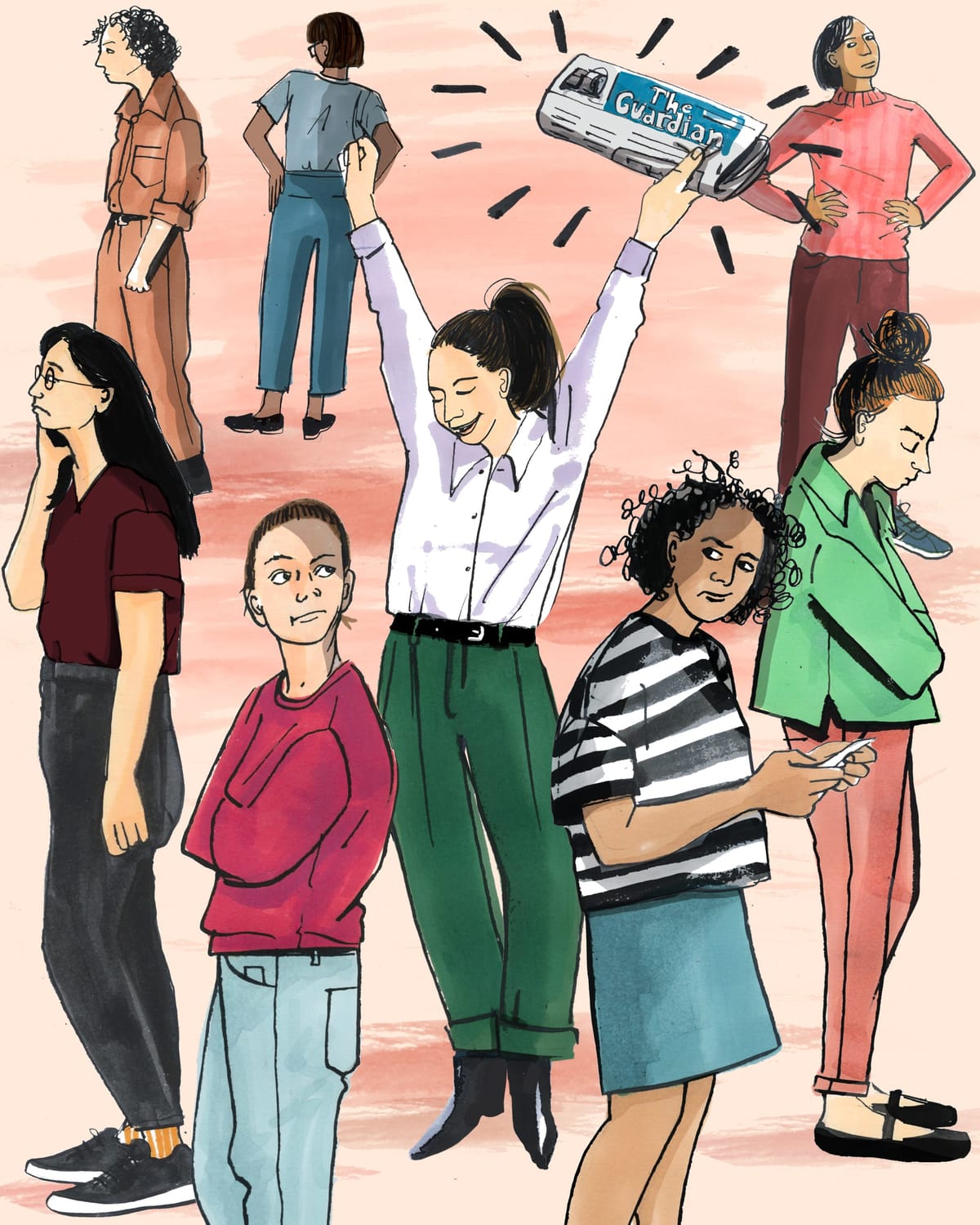
Could have done more
There are other things about Justice Ginsburg’s life and legacy that deserve a closer look, too, even as we delight in the memes, the lace-collared Halloween costumes and impassioned bumper stickers.
In the wake of her death, The Marshall Project, a nonprofit journalism platform covering the criminal justice system, astutely pointed out “RBG’s mixed record” on criminal justice and race.
“She authored Cutter v. Wilkinson, which enhanced protection for prisoners’ religious rights. But she also wrote Porter v. Nussle, which erected new barriers for prisoners seeking to vindicate their rights in federal courts,” David Fathi, director of the American Civil Liberties Union National Prison Project said.
“She dissented in Beard v. Banks, when the court upheld 23-hour solitary confinement without newspapers, radio, television, or telephone calls,” he added. “But she also joined the court’s opinion in Overton v. Bazzetta, which upheld draconian visiting restrictions in Michigan prisons, including a potential lifetime ban on visits for prisoners found guilty of substance-abuse violations.”
Ruth Bader Ginsburg has also been criticized for other things. In 2016, she was lambasted for criticizing the San Francisco 49ers quarterback Colin Kaepernick and other football players for refusing to stand for the national anthem before kickoff. She’s been accused of not going far enough to address intersectionality, especially the experiences of women of color and of members of the LGBTQ+ community. Also in 2016, she was chastised for breaking with Supreme Court protocol when she called then-presidential candidate Trump a “faker” and said that she couldn’t imagine what the country would be like with him in charge.
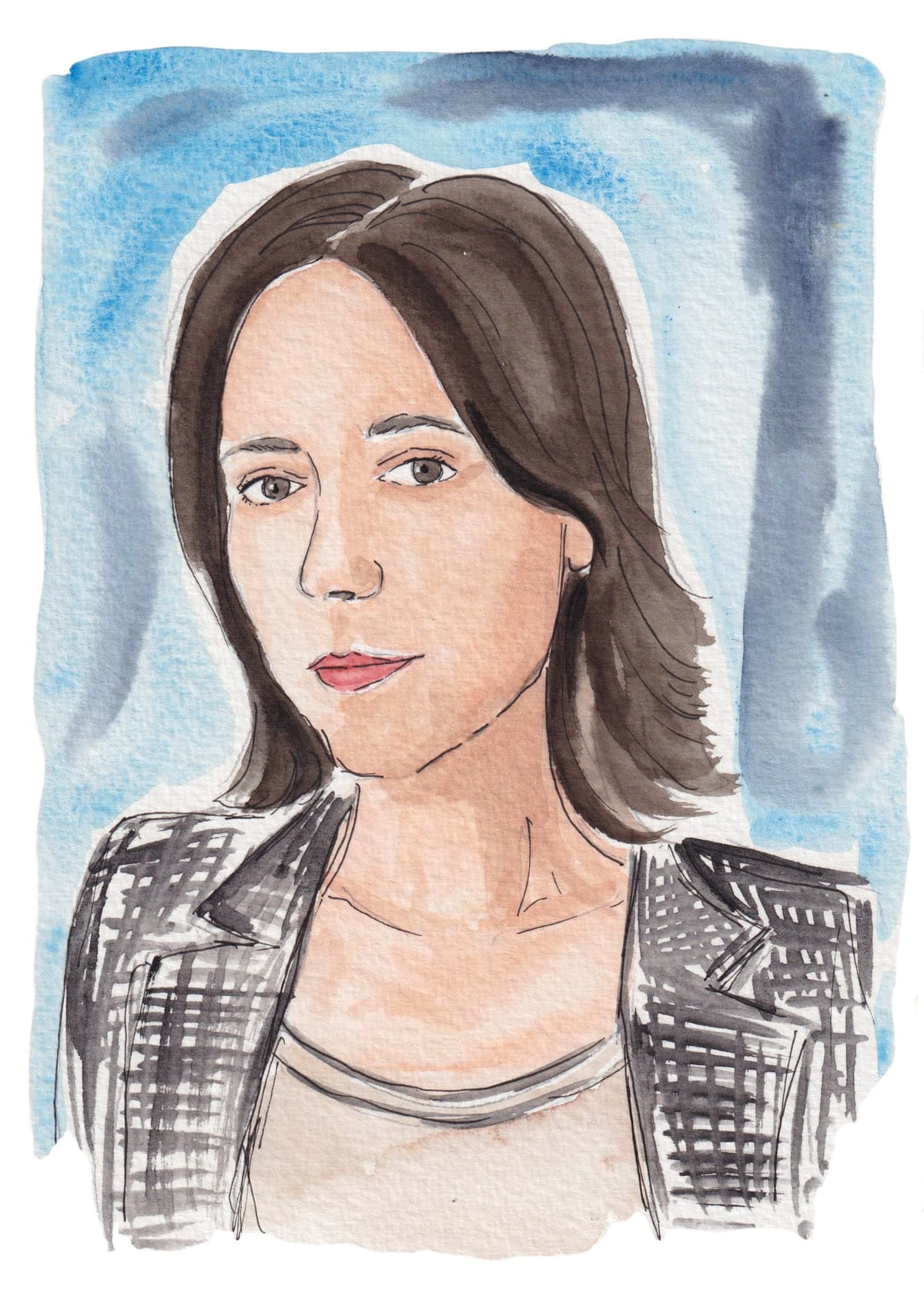
Inevitable limitations
As a lover of history, I’m convinced that some of the gravest disasters in the history of human existence have happened as a result of lionizing people who are flawed—of being unable, or unwilling, to recognize the inevitable limitations of someone’s greatness.
I know Ruth Bader Ginsburg was not perfect. But who is? We have to take the bad with the good—the inadequate with the exceptional. What I also know is that I have deep and profound admiration for her, and for the enduring ways in which she has shaped the U.S. legal system and the fabric of this country.
Of course she could have done more, of course she could have avoided gaffes and ill-judged blunders. And yes, she’s complicated, imperfect and human, but even when it comes to the most powerful arbiters of the land, we can’t ask for more and we’ll never get more. And ironically, that’s something with which the late Supreme Court justice would almost certainly have agreed.





